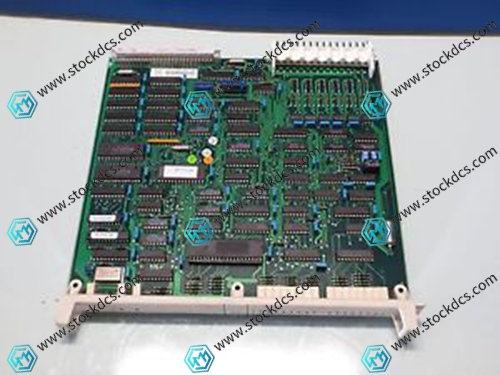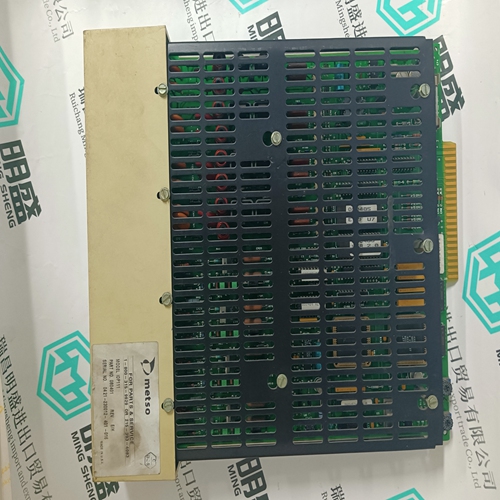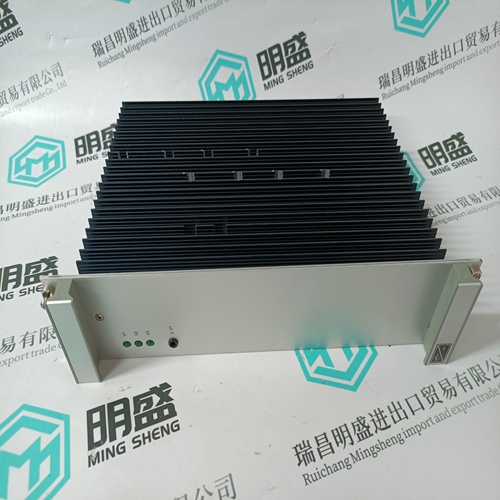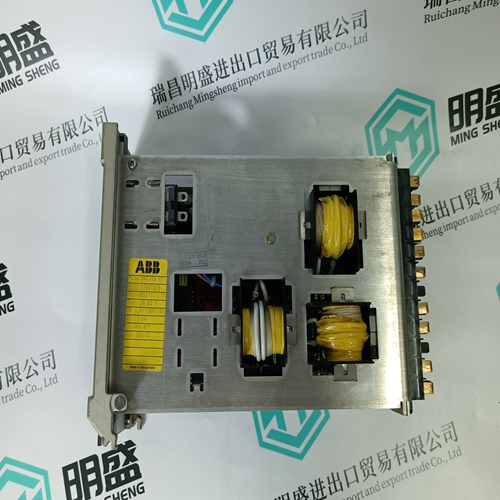Home > Product > Robot control system > ASEA 2668 404-3 Interface Module
ASEA 2668 404-3 Interface Module
- Goods status: new/used
- Delivery date: stock
- The quality assurance period: 365 days
- Phone/WhatsApp/WeChat:+86 15270269218
- Email:xiamen2018@foxmail.com
- Tags:
- Get the latest price:Click to consult
ASEA 2668 404-3 Interface Module
Product Details Introduction
ASEA 2668 404-3 interface module is an interface component used in industrial automation and control systems, with the main function of enabling communication and signal transmission between different devices and systems. The following is the detailed information and application areas of the interface module:
Main functions and features
Interface function:
Communication interface: Provides multiple communication interfaces for data exchange with control systems, input/output devices, and other modules.
Signal conversion: responsible for converting and transmitting signals from different devices to ensure efficient communication of the system.
High performance:
Real time processing: With real-time processing capabilities, it can quickly respond to changes in communication signals, ensuring the efficient operation of the system.
Stability: Designed for industrial environments, it has high reliability and durability, and can operate stably under harsh conditions.
Communication ability:
Interface support: Supports multiple communication interface types, such as serial interface, parallel interface, network interface, etc., to meet different communication needs.
Protocol compatibility: Supports multiple communication protocols to ensure compatibility with different types of control systems and devices.
Security and Protection:
Fault detection: Equipped with built-in fault detection and self diagnosis functions, it can monitor the status of interface modules in real time and provide fault information for timely processing.
Protection mechanism: including overload protection, short circuit protection, etc., to ensure safety and stability under various working conditions.
Easy to maintain and configure:
Modular design: Supports modular design, allowing users to expand or replace as needed, simplifying system integration and maintenance.
Flexible configuration: The parameters of the interface module can be adjusted according to application requirements to optimize communication performance and adapt to different application scenarios.
Typical application areas
Industrial automation:
Equipment connection: Connect various devices such as sensors, actuators, and control systems in industrial automation systems to achieve data transmission and signal exchange.
System integration: used to integrate different automation systems and equipment together, improving the overall coordination and efficiency of the system.
manufacturing
Production line control: In the production line control system, communication between equipment and the control system is achieved to ensure the smooth progress of the production process.
Data collection: used to collect data from production equipment, analyze and monitor it, and optimize production processes.
Robot system:
Signal interface: Provide signal interfaces in robot systems to enable communication between robots and other devices or systems.
Control coordination: used to coordinate various components in a robot system and improve the overall performance of the robot system.
Electricity and Energy:
Device management: used for device communication in power and energy systems, to monitor and control device status.
System integration: In the power management system, various devices and systems are integrated together to improve the management efficiency of the system.
Transportation and Logistics:
Transportation system: Implement communication between transportation equipment, such as traffic lights and monitoring devices, in the transportation system to optimize traffic flow.
Warehouse management: Implement communication between equipment in automated warehousing systems to improve logistics processing efficiency.
Building automation:
Facility management: In building automation systems, communication between facility equipment such as lighting, air conditioning, access control systems, etc. is achieved.
Security system: used for communication in building security systems to ensure the security and reliability of the system.
summary
The ASEA 2668 404-3 interface module, as a key component in industrial automation systems, provides multiple communication interfaces and signal conversion functions. It supports real-time processing, reliable communication capabilities, and flexible configuration options, and is widely used in fields such as manufacturing, robotics systems, power, and energy. Its high performance and stability make it a key tool for achieving device connectivity and system integration.
Product image

Related products:
RadiSys 61-0475-12 Axis Control Module
RADISYS 97-9536-20 Ethernet Port Module
RADISYS 451558-004 Communication Module
Other website links
More inventory models
| SRF5348-4485-84-5-45BC-CU | AMAT 0100-20070 | PFBL141B/C |
| SR3616-4381-7 | AMAT 0100-00052 | PFCL 201C-10.0KN |
| SR3640-8354-7-56C | AMAT 0100-66025 | PFCL 201C-20.0KN |
| EP3644-5214-7-56BC-CU | AMAT 0100-01714 | PFCL 201C-5.0KN |
| SR3642-4822-7-56BC-CU | AMAT 0100-20152 | PFCL 201C-50.0KN |
| 40PA57-36-37-TENV-S | AMAT 0100-20026 | PFCL 201CD-10.0KN |
| STF3648-5268-61-56BC | AMAT 0100-90517 | PFCL 201CD-20.0KN |
| BA3630-4415-48S | AMAT 0100-94078 | PFCL 201CD-5.0KN |
| SR3640-0771-7-48C | AMAT 0100-02139 | PFCL 201CD-50.0KN |
| SR3632-4336-7-48C | AMAT 0100-35180 | PFCL 201CE-10.0KN |






